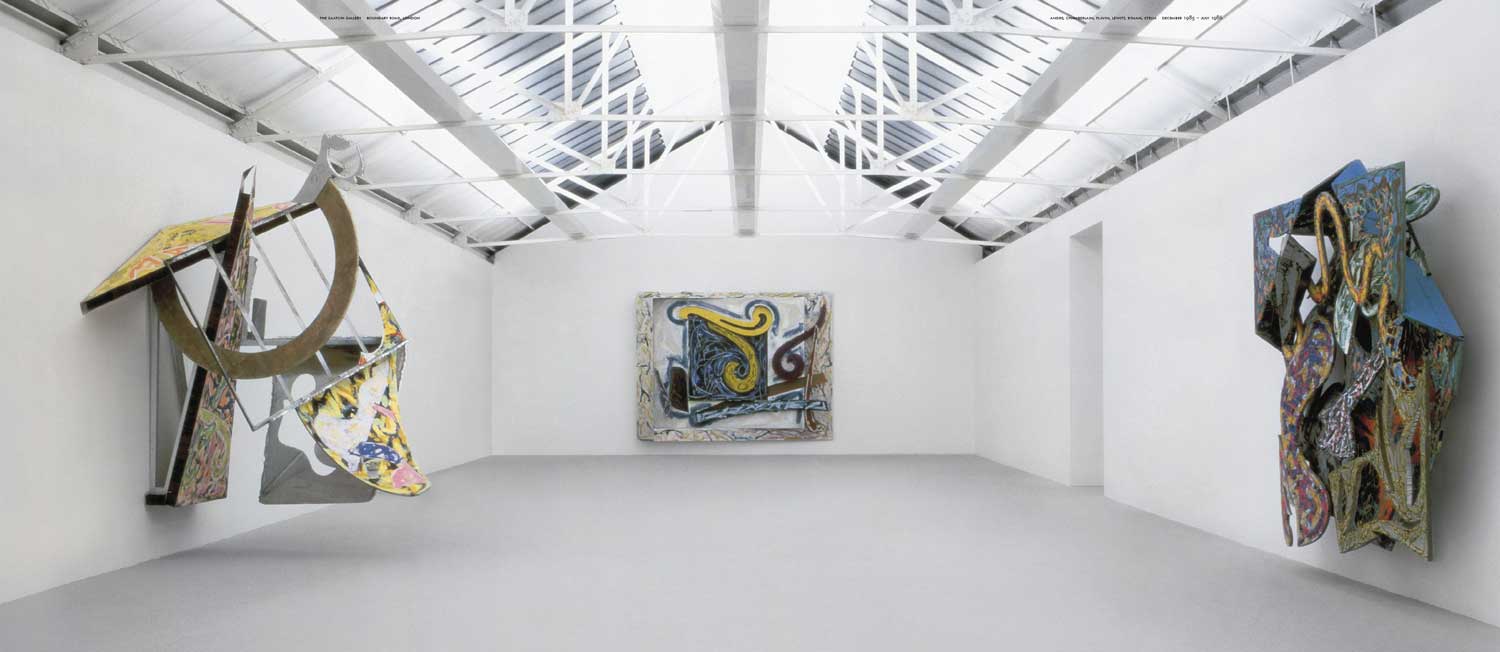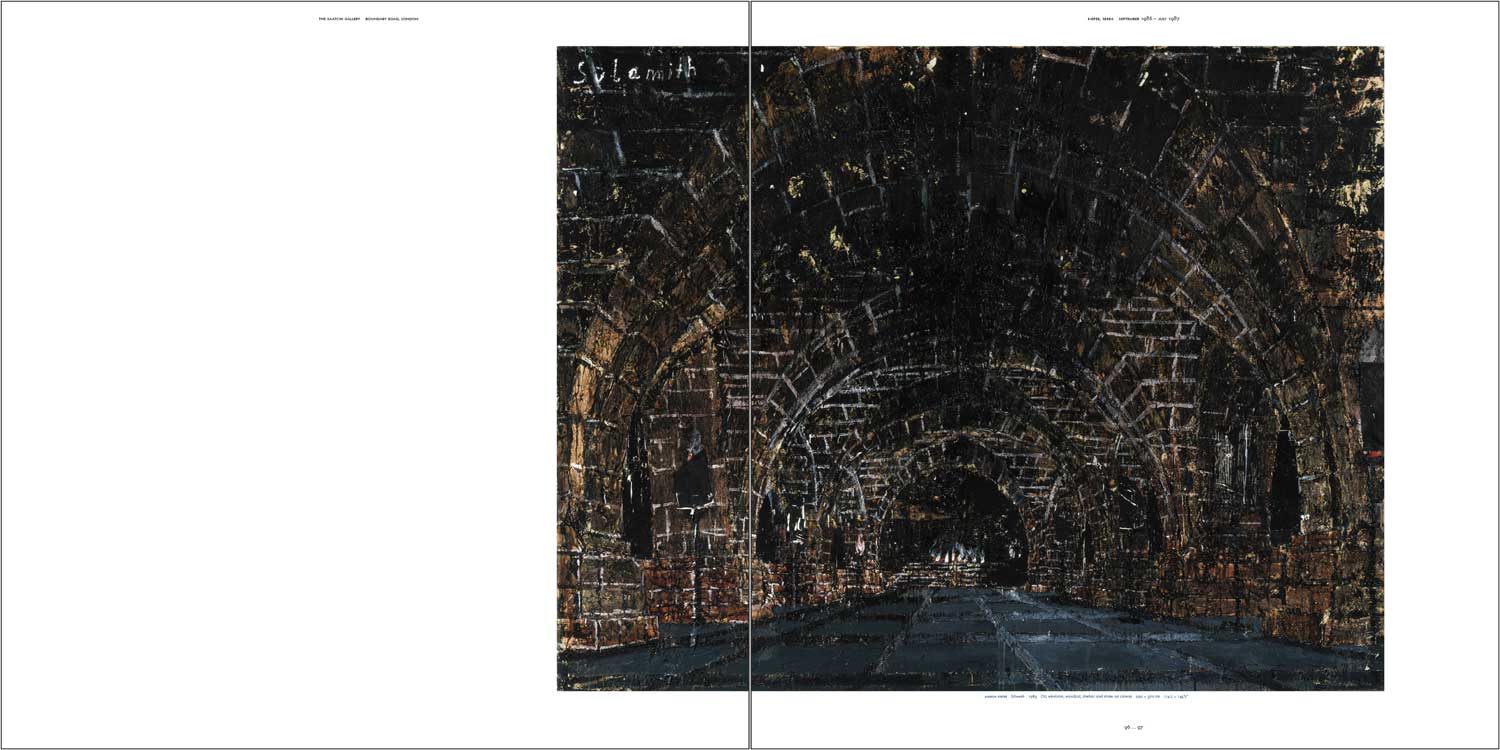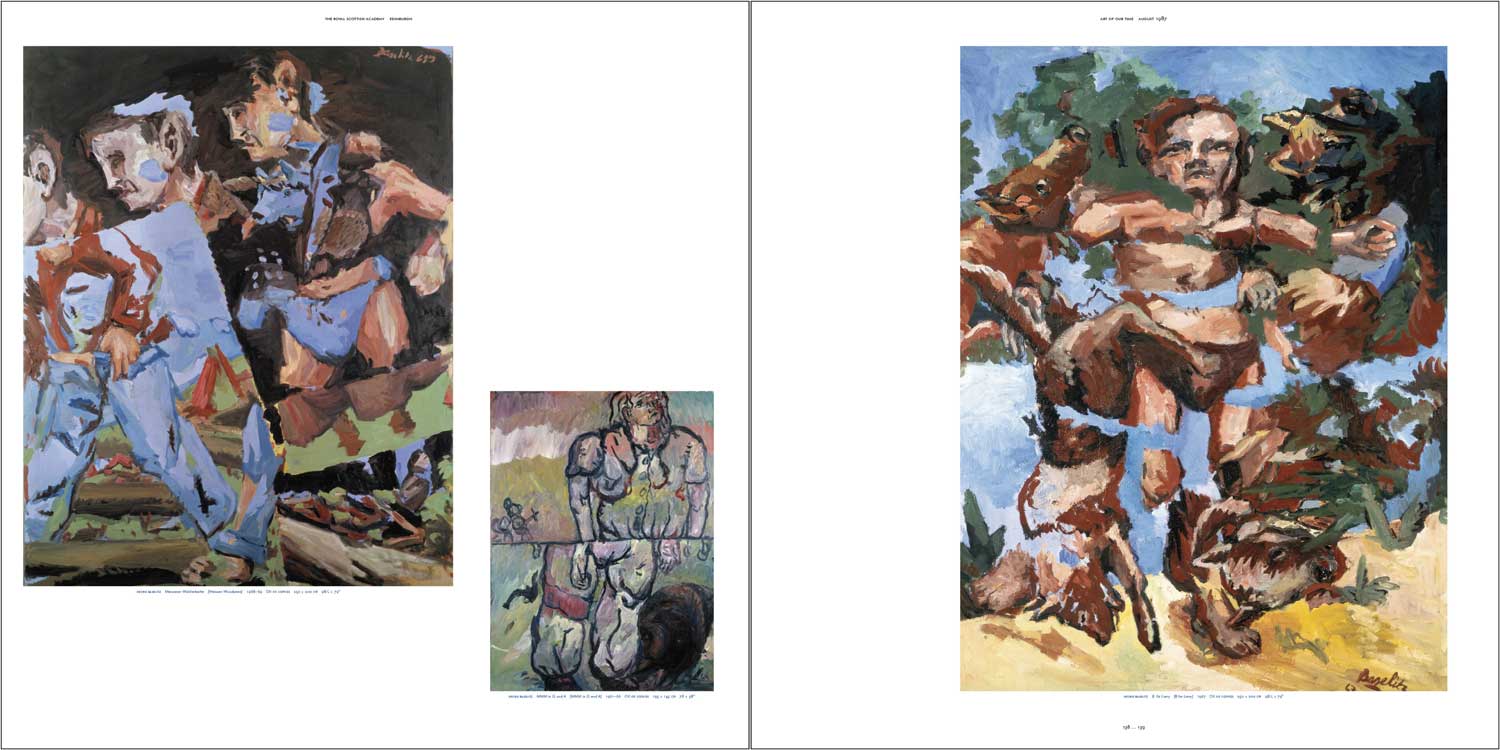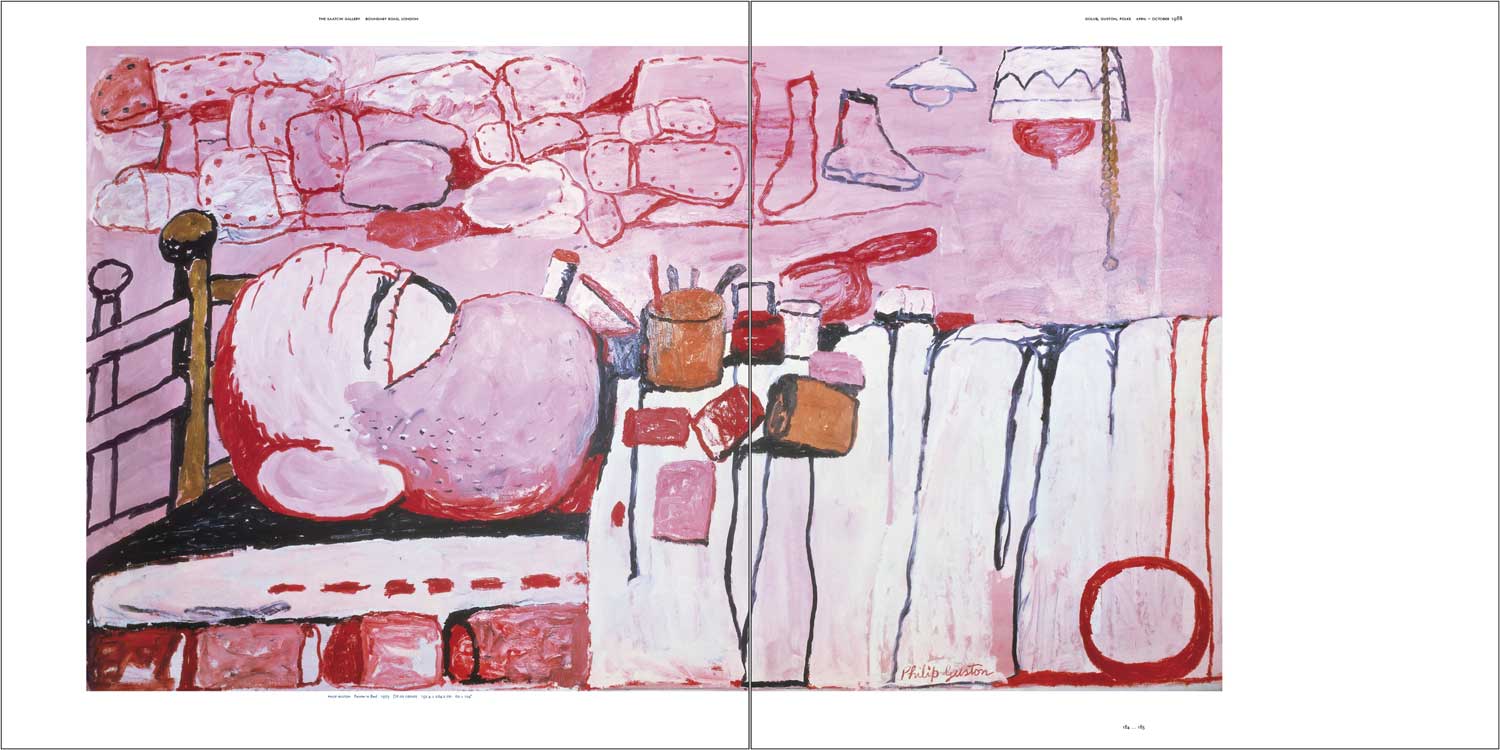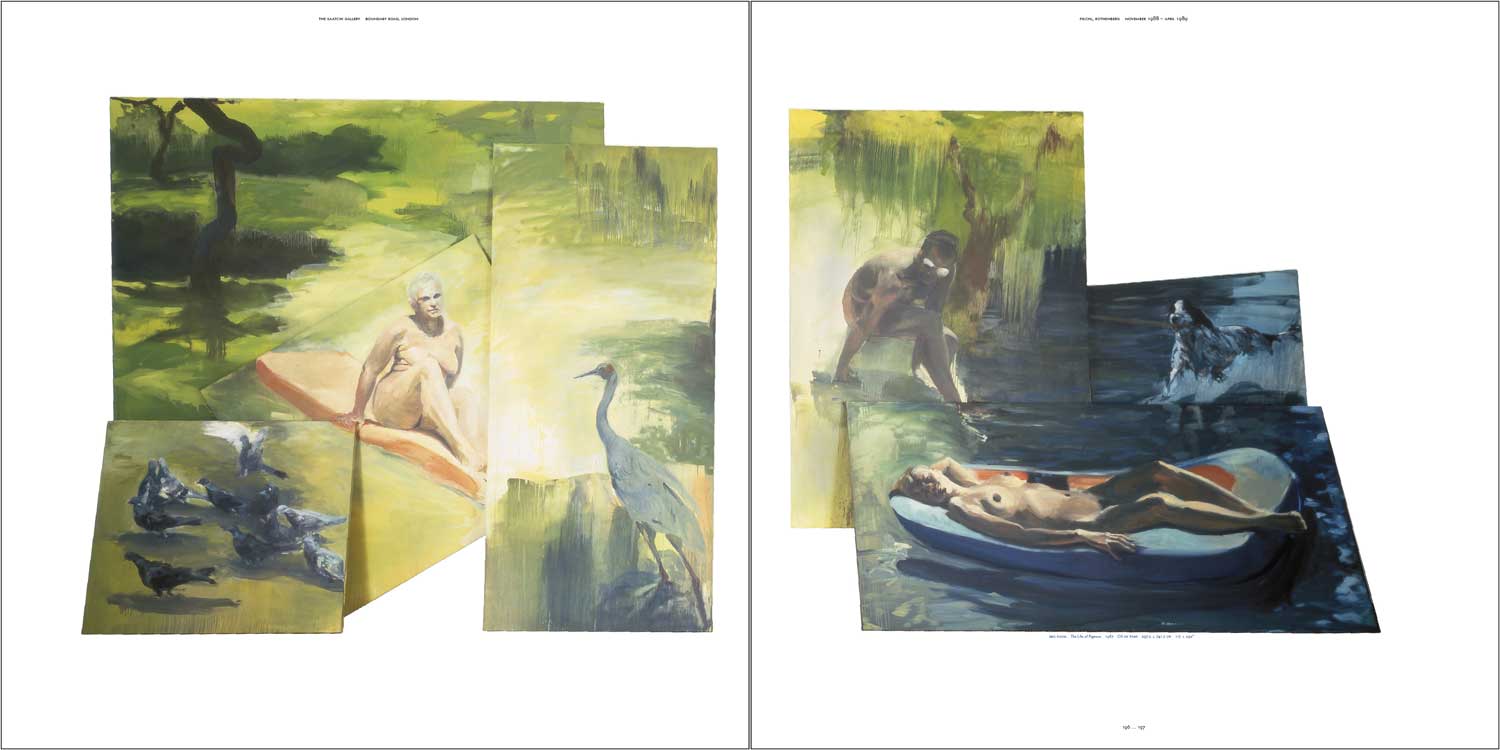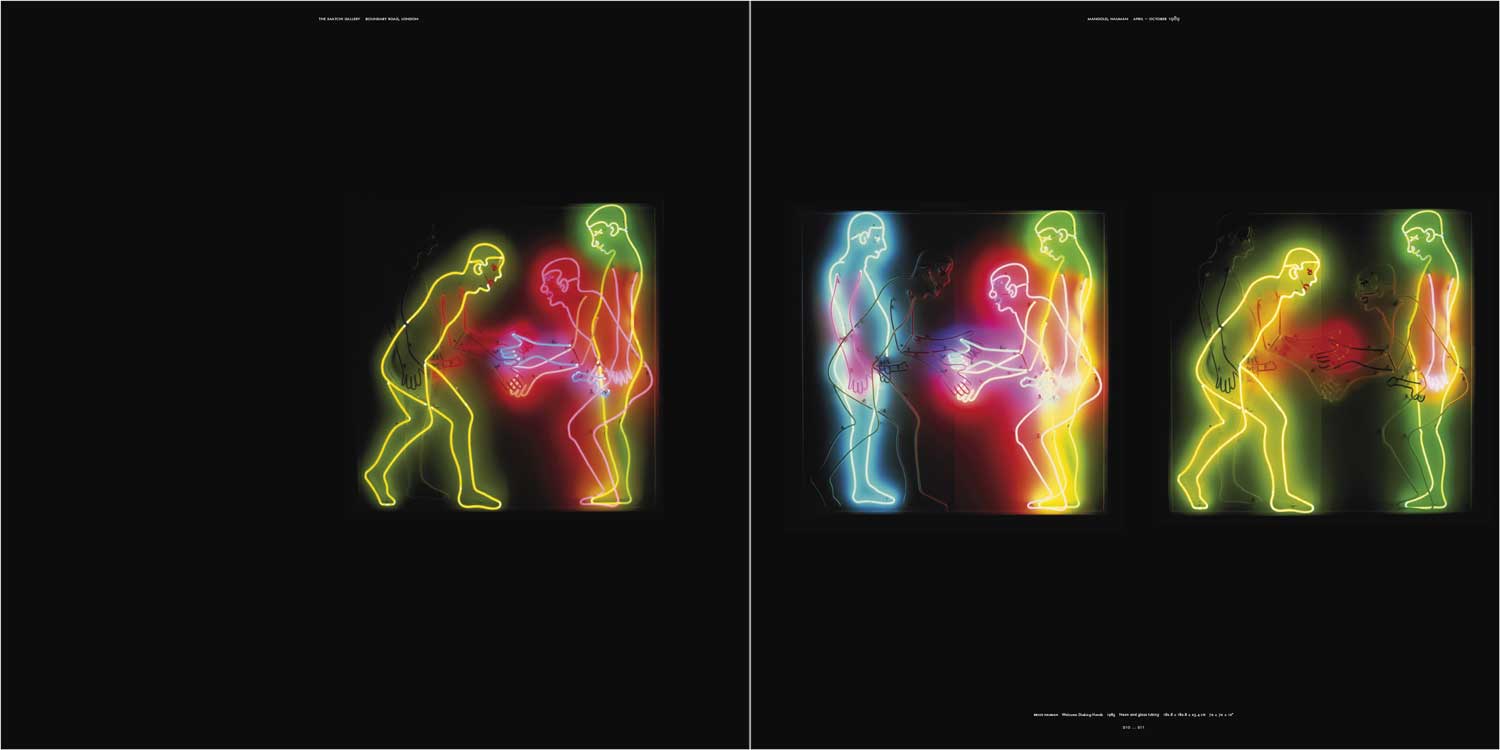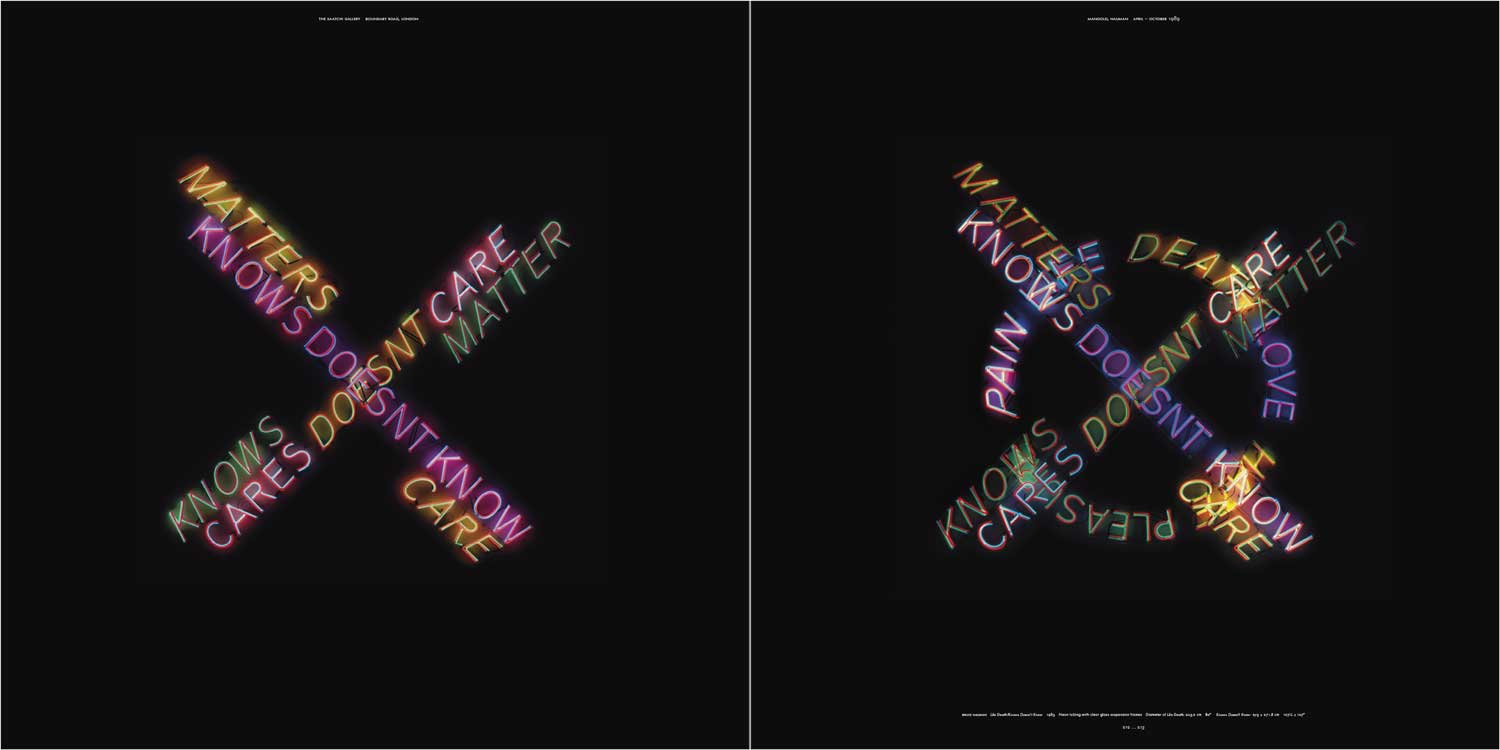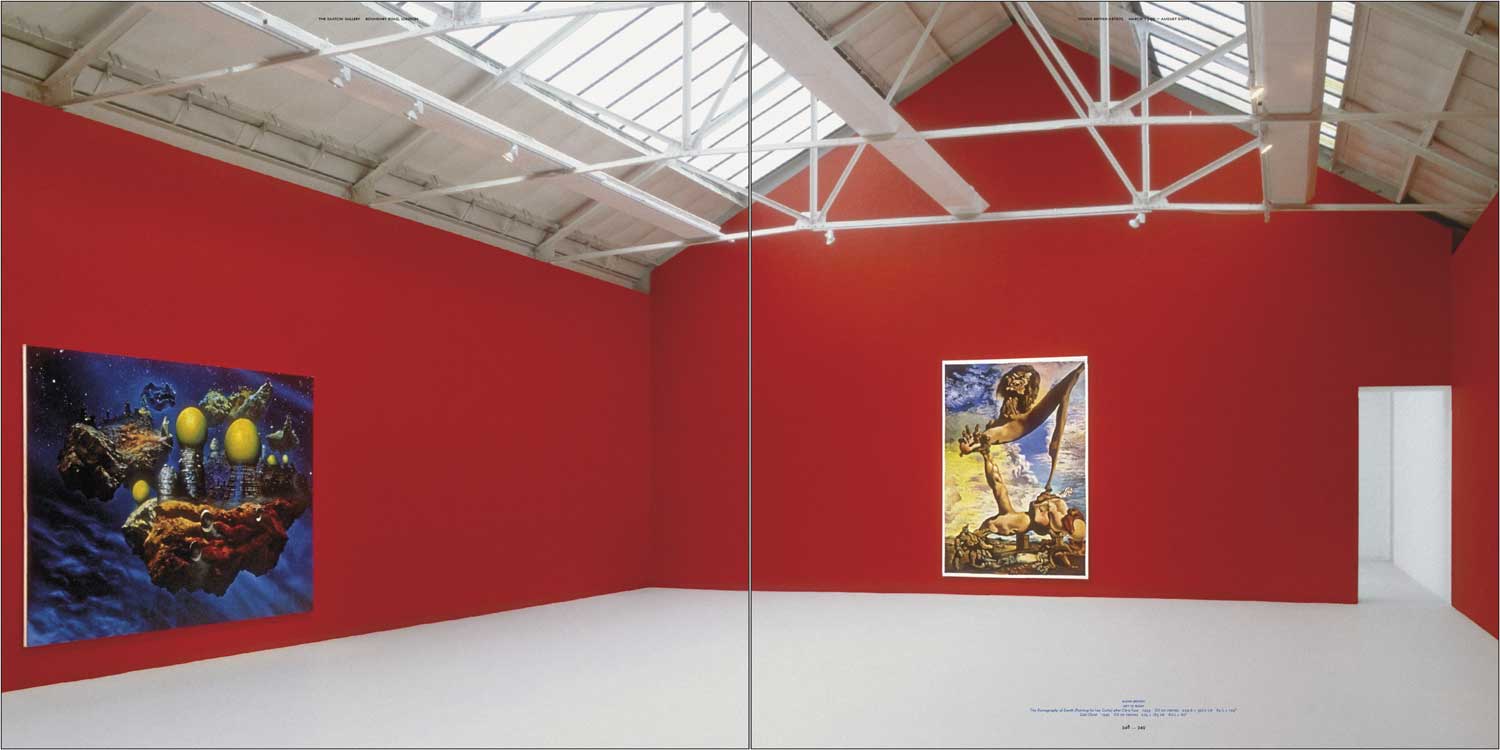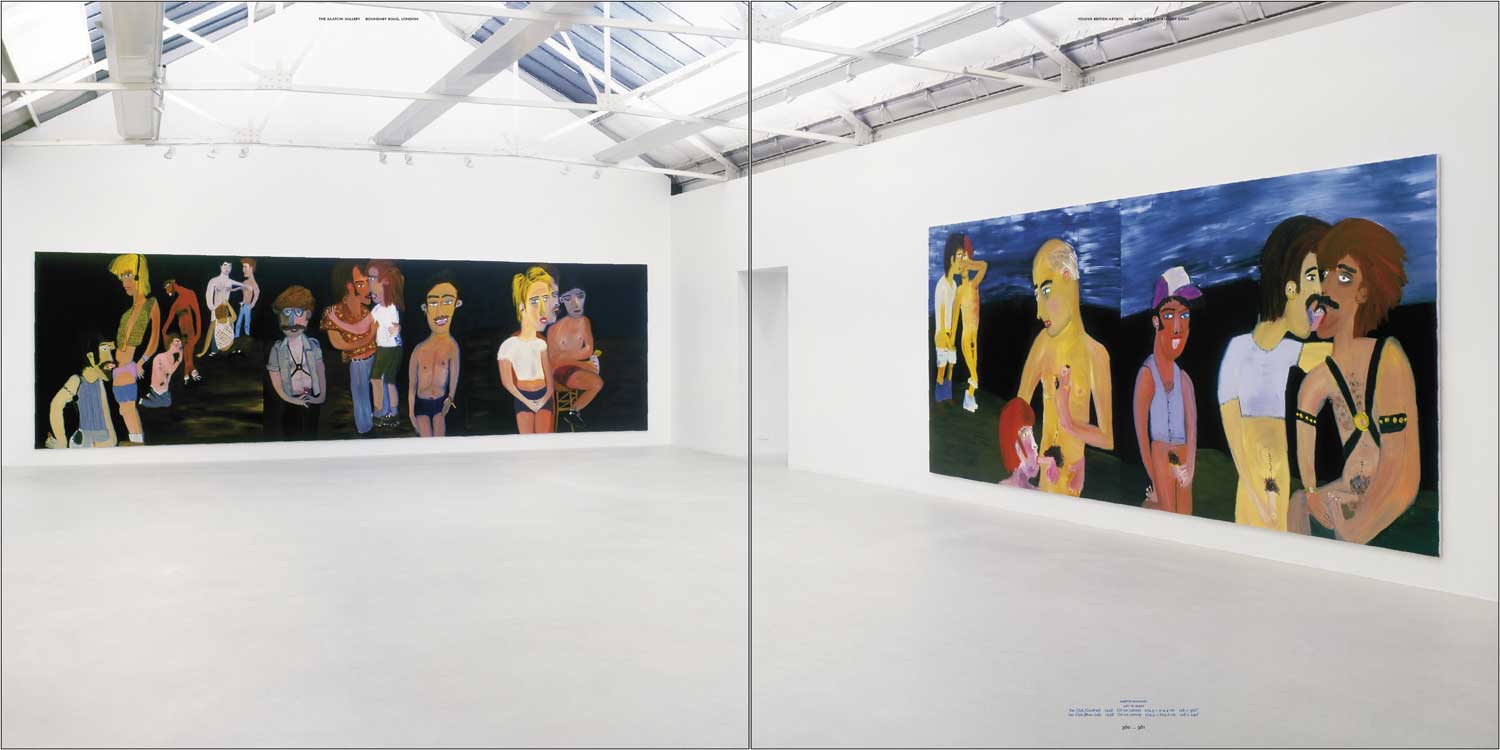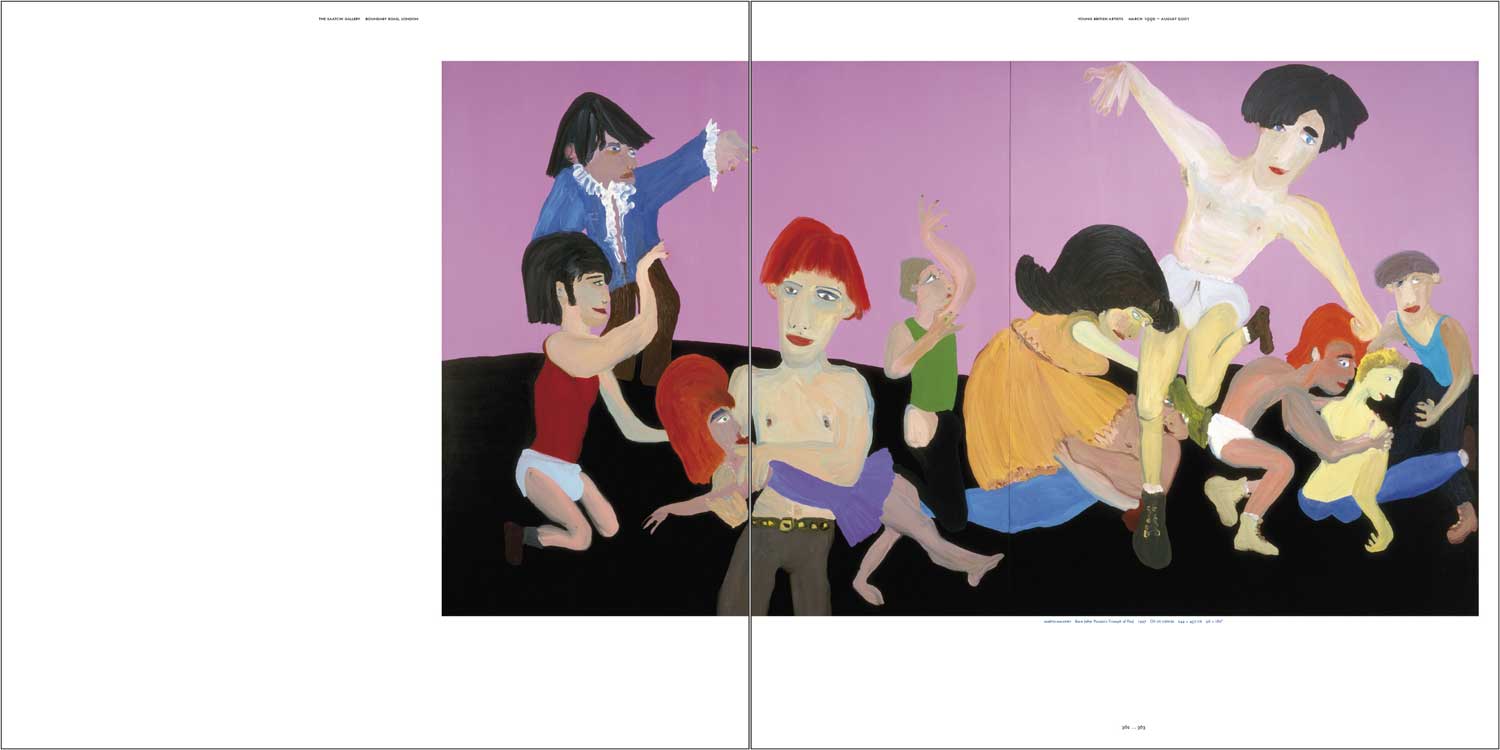An exclusive extract taken from The Saatchi Opus. A piece written by renowned English art critic and media personality, the late Brian Sewell
The Tate Gallery, in all its manifestations and in all the responsibilities imposed on it in its first half century — and which, since then, have grown more complex — has never had enough money. It has always had too much to do and far too little with which to do it, its internal interests often in conflict. No government of any political persuasion has ever recognised the extent and importance of its functions; none has ever been wise and generous enough to give it proper funding. Expected to be the national gallery of historic British art, of modern European and American art — by which was meant anything from mature Impressionism to the present day (an ever moving feast) — and, most difficult, the national gallery of modern British art, its duty in this sphere to discover and acquire what is promising, preferably before market forces put prices beyond the gallery’s purse, it has, since its foundation, failed in all these responsibilities.
To some extent these spheres overlap, and, with the passage of a century or so, their categories and sub-categories have multiplied and changed. The National Gallery’s droit du seigneur over the Courtauld Impressionists and other important paintings formerly dubbed modern has gravely impoverished the Tate and even now that it has been divided into a pair of institutions, Tate Britain and Tate Modern, the distinctions between them are blurred, particularly in the field of contemporary art. Are Tracey Emin and Damien Hirst better categorised as British or as contemporary artists of supreme international importance and influence? Ask this of the more traditional Freud and Hockney and the answer is all too evidently British, but not so with Hirst and Emin. In no field have the Tates, constantly overtaken by the level of prices in the open market since 1946, the year in which the original Millbank gallery was, some half century after its foundation, first given a purchase grant — of only £2,000 — been able to build collections that can be described as of international importance, and with the opening of Tate Modern the wretchedness of its possessions was laid bare. Playing the prudent pauper, rattling the begging-bowl has helped the Tate in several emergencies, but the great divide between what the Tate should have become and what the twin Tates are grows ever wider. The historic British collection jogs along on jingoism, but the Impressionist and Post-Impressionist holding is weaker than that of many a provincial German or American museum and can only stay so, and the collection of immediately contemporary art, even of work by British artists, has year by year fallen far behind many a private holding.
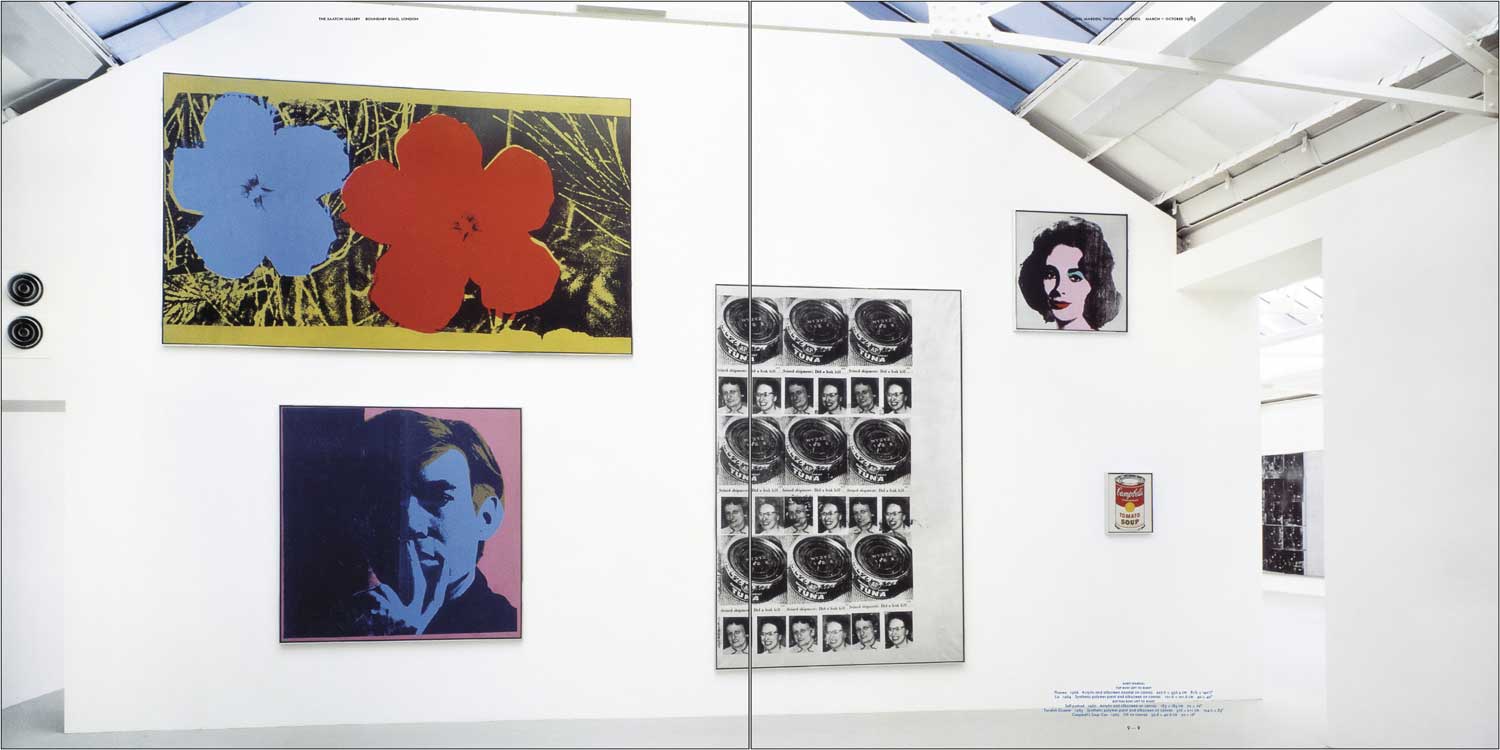
It is in this last sector that Charles Saatchi seemed, for a quarter of a century or so, to be the nation’s saviour, a free spirit untrammelled by trustees and all the other constraints of public gallery bureaucracy, rich as Croesus and able to buy at whim. The dilemma that confronts every curator of a public collection is that, without even a brief historical perspective, judging the quality of contemporary art is a risky business, yet if judgements and purchases are not made promptly while artists are young, prices low and the most promising work available, they may not be made at all — witness Francis Bacon, once outlandish but now revered as an old master, whose thousand-pound pictures in the 1950s were worth a million by the 1980s and are worth tens of millions now. It is one of the duties of such a major museum as the Tate to represent all the innumerable and often contrary developments in art, in its theories, styles and materials, as well as the intellectual attitudes of those who claim to be artists. Carl Andre’s Equivalent VIII — ‘The Bricks’ as they came to be known — so often used to vilify the Tate, should be there, however absurd and self-deluding they seemed to many puzzled onlookers, simply because they represent an idea that in the rarefied atmosphere of Conceptualism was accepted as full-blooded art by artists and critics. In this sense a national art gallery with the acknowledged responsibilities of the Tate must be encyclopaedic, making accessible to a wide public (even if rarely on view) the great variety of ideas that have flowered, weeded and seeded so vigorously, and often so briefly, in the last thirty years.
The Tate not only has had insufficient funds for this approach, but on many occasions when a new acquisition has attracted attention, it has been extraordinarily arrogant in its response to the general public and the press that presumes to speak for it. Andre’s Equivalent VIII, one-eighth of a work first exhibited in New York in 1966, was bought by the Tate in 1972: his idea was simple, even trivial — that 120 bricks, no matter in what contiguous arrangement, always occupy the same volume of space; his eight variations are therefore a form of visual mathematics, and there is the additional point that 120 is a number particularly rich in factors, so offering a dozen more Equivalents. Andre also explained that the spectator should be encouraged to stand on each Equivalent and imagine it to be the base defining the ground-plan limits of a sculpture that is a limitless column of air, reflecting the five Endless Columns of Brancusi. The then Director of the Tate, Norman Reid, when the press belatedly noticed ‘The Bricks’ in February 1976, forbade every member of his staff to respond to the raucous mockery, explained nothing himself and, on the grounds that the gallery never disclosed what it paid, would not reveal that the figure was £2,297. In all this he fuelled widespread hostitility, inflaming sceptical British attitudes to forms of art neither immediately intelligible nor recogniseable as art. This was not, however, merely a blind philistine mob baying for blood on the Millbank steps; it was the response of many artists of a more traditional school and of many well-informed curators, collectors and sane men for whom the art historian Douglas Cooper, who was all these things and far more shrewd than any man ever appointed Director of the Tate, had spoken a month earlier when he condemned the Tate’s support of ‘stupidly experimental or temporarily smart rubbish … freaks and follies passed off as creative art …’(1). Reid should have explained the acquisition.
Charles Saatchi, without trustees or public obligations, entirely his own master, could never have found himself in such a stew. By the mid 1970s, under the wing of his first wife, Doris Lockhardt — American, schooled in the history of art at Smith College, discreetly upper crust — Saatchi had been quietly collecting for five years or so. At first, noticed by few, they bought in quantity artists well-established among American and German collectors, their acquisitions scarcely controversial and finely judged in range and quality — works by Warhol, Schnabel, Ryman, LeWitt, Salle, Kiefer, Polke and Baselitz among them. They worked together for some fifteen years or so, largely a mystery to the public and the press, but known well enough to a handful of influential dealers and curators. They formed close relationships with Norman Rosenthal, who had the whip hand in controlling exhibitions at the Royal Academy, the largest single temporary art exhibition space in London, and with Nicholas Serota, then Director of the Whitechapel Gallery, firmly established by earlier directors as a lively centre of avant-garde and contemporary art. Of this, Serota was to secure the appointment of Saatchi as a trustee.
The Saatchis’ most adventurous purchase was of paintings by Julian Schnabel, the aggressively self-promoting ‘bad boy’ of American art in the 1970s and 1980s: of these they had enough by 1982 to supply all but two of the paintings shown by the Tate in a Schnabel exhibition that year. Charles, however, was then on the steering committee of the Tate’s very new (and intended to be influential) Patrons of New Art, a body limited to the rich and generous, inviting the involvement not only of collectors in the field but of dealers, who numbered some 20 per cent of the membership. Accusations of undue influence and manipulation were inevitable and, charged with seducing the Tate into endorsing their collection and pushing up its value, the Saatchis appeared to part company with the gallery, soon to set up one of their own. The architect of this new gallery was Max Gordon, a member of the executive committee of the Patrons of New Art and the initiating genius of the Turner Prize: the Saatchis’ lines of communication with the Tate were thus not broken. They continued to buy paintings by Schnabel and were substantial lenders of his then very recent work to his next public exhibition in London, at the Whitechapel Gallery in 1986, under Nicholas Serota: on this occasion the press failed to draw conclusions from either Charles’s position as a trustee, or his corporate patronage through Saatchi & Saatchi, the advertising company that had made him a multi-millionaire.
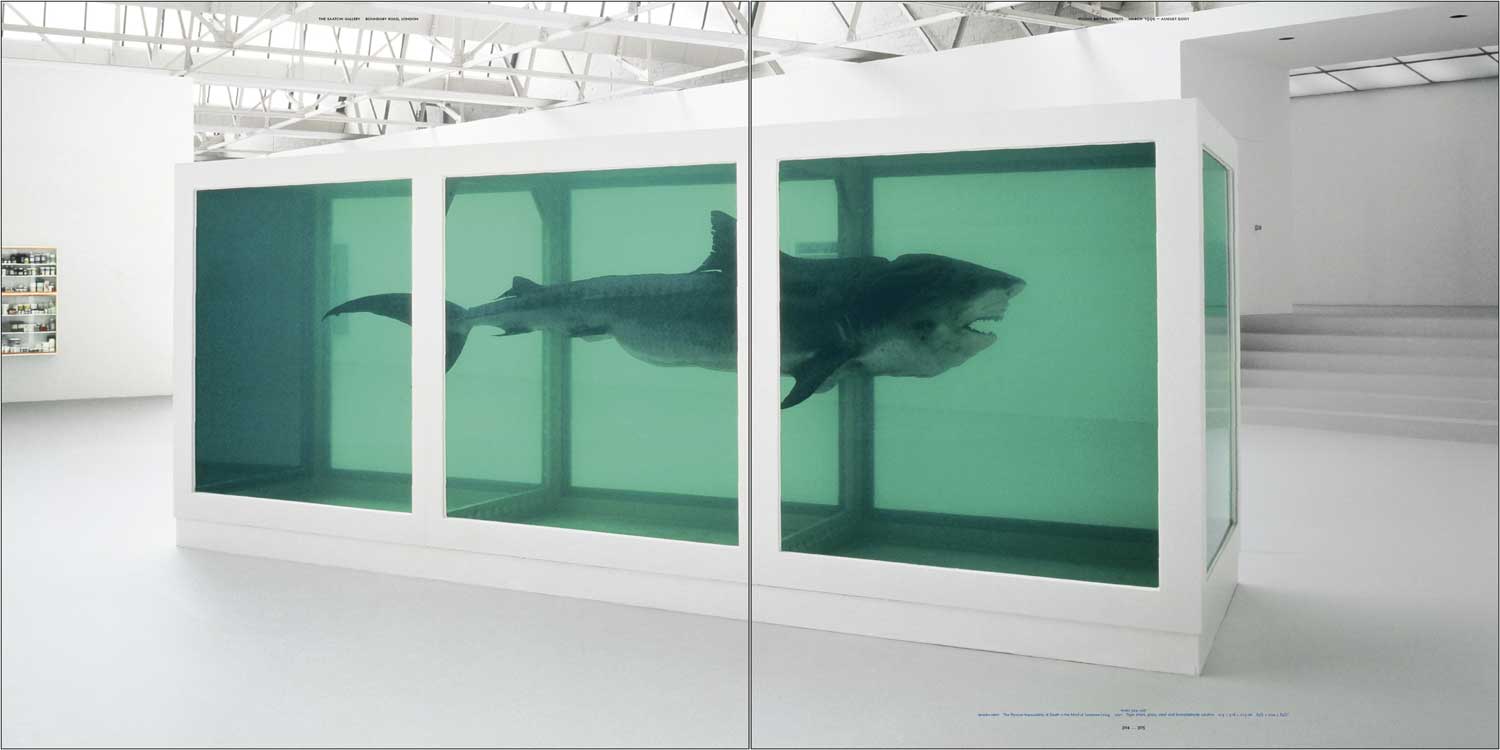
If Charles Saatchi has a deserved claim to the respect of the art world it lies in his conversion into an art gallery of an industrial building on the extreme northern fringe of St. John’s Wood. He made it the largest private exhibition space in Britain, spare and functional, a place of struts, plain walls and roof lights, in which changing floor levels and wide steps shaped the spaces, made some seem vast and others almost intimate, and subtly controlled the wandering visitor’s meandering. Paradoxically, while it invited vast canvases and superhuman sculptures, small works were not overwhelmed, for the visitor established his own comfortable relationship with each work of art, stepping forward and stepping back, as he and the exhibit between them defined the needed space. Space was thus infinitely flexible, subtle, anonymous and undemanding, a perfect model that the architects of Tate Modern chose to ignore.
With the gallery’s opening it seemed clear that Charles Saatchi had shouldered the bleak duty of the Tate to acquire and exhibit what have so often since seemed vain developments of art as the twentieth century gave way to its successor. From March 1985 until the end of the decade a series of exhibitions revealed the core of the collection — Judd, Twombly and Warhol, Andre, Flavin and Stella, Koons, Guston and Nauman — the most astonishing of which was mounted in the autumn of 1986, when nineteen paintings by Anselm Keifer, ‘ a poet in paint, a maker of myths’ and very, very German, were shown with ten ‘arrested in motion’ sculptures by Richard Serra — a heavily impressive show. For some onlookers this was the turning point at which scepticism became grudging regard. This was Saatchi’s third exhibition and it seemed evident that he had done and was doing what the Tate had failed to do, and the question was no longer ‘Is it art?’ or ‘Is it any good?’, but, informed by the weary recognition that it was the best of its kind, by what mechanism so considerable a private collection could be translated into the possession of the Tate. It was assumed that this must be his objective. We had seen how Peter Ludwig, the German chocolate billionaire, having earlier collected even more (and better) material of the same kind had, with his gift of it and the collaboration of the city fathers of Cologne, so overwhelmed the early nineteenth-century Wallraf-Richartz Museum that this ancient foundation was completely smothered in its subsumption. We could not see how the Tate could become the Saatchi Gallery, but we were convinced that, perhaps through some adjustment of taxation, something of the Wallraf-Richartz kind must happen. That it did not, that no one in any authority campaigned for it, and that the collection was utterly lost, was a cultural disaster of much the same quality as the loss of the Thyssen Collection of Old Masters to Madrid. That is was lost was largely due to the decision of the Saatchis in 1987 to part company; Larry Gagosian and Sotheby’s handled the dispersal as part of the divorce settlement. It has been argued that Saatchi was on two counts quite content with the dispersal — that the collection was complete, a finished entity and, with nothing to add to it, his energy and interest had lapsed, and that, without the disciplined connoisseurship of his wife, he felt free to pursue what will-o’-the-wisp he would. There is no truth in the first point: important though the first collection undoubtedly was in range and quality, it had neither particular shape nor evident purpose and was no more than half formed; it needed to be twice its size to turn from omnium gatherum into a comprehensively representative demonstration of American art in the later twentieth century, and its German holding, though dramatic, was no more than a toe in European waters. Of the British holding in 1989, fine though it was in terms of Freud, Kitaj, Hodgkin, Auerbach, Kossoff, Rego, Scully and, absurdly, Carel Weight, even the author of its catalogue felt compelled to observe that ‘There are still some vital gaps. The collection is not comprehensive …’(2). Nevertheless, each of these aspects of the collection would have greatly extended and enriched the Tate’s meagre holdings, contributing to that Gallery’s growth in international status and giving it the impetus for expansion that it has always lacked.
As for the second point, in this there may have been some truth. Of the first collection the sane man might say, as he could of any formed in recent years by banks and businesses, that it was exactly what one might have predicted — safe, backed by reputable dealers, bought by reputable curators for reputable public galleries, nationally and internationally exhibited by reputable institutions. The Saatchis had bought their way into the highest levels of the art market; they had not formed taste but merely followed it and done so sensibly and well, but with no sense of adventure other than that of the phillumenist who has bought a better matchbox than the man next door. Yet Saatchi was a man whose profession was to transform the fortunes of his clients, to break new ground and create demand, instincts that must have been stultified when he was forming the first collection. Freed of the constraints of acquisitional propriety, instead of following, he could lead and become phenomenally influential, not as a man who prizes aesthetic response as the essential currency of the artist and his patron, but as a showman, a ringmaster, a Barnum or Bailey with a caravan of freaks to attract the curious and gull the gullible.
By 1992 Charles Saatchi was well on the way to forming the collection for which he is most widely known, that of work by Young British Artists (the YBAs). There was no continuity with the British artists whose work he had already collected, the gilt-edged group of Freud and Hodgkin, Auerbach and Kossoff. From these the subjects of his new venture were uttlery isolated; these grand old men had been the vision of Alan Bowness, appointed Director of the Tate in 1979, when, a quarter of a century earlier, he opined it ‘more than likely that we are now witnessing in this country, here and now, one of the greatest epochs of the history of art.’(3) Had this been true — and with the exception, perhaps, of Francis Bacon, it was not — the Tate was in no financial condition to respond. Four decades on, Bowness was echoed early in 2008 in a report commissioned by the then Culture Secretary, James Purnell: ‘British society’, the writer put it, ‘has the potential to create the greatest art ever produced. We could even be on the verge of another Renaissance.’(4) This, the silliest thing ever said on behalf of a government minister in Britain, must have been a reference to Saatchi’s elevation of the YBAs rather than to the intellectual climate of Florence in the Quattrocentro, and, were it to prove true, the Tate could still not respond, for if Saatchi has achieved anything, it is that artists who might once have asked hundreds for their work can now expect as many hundreds of thousands, with millions a by no means distant prospect.
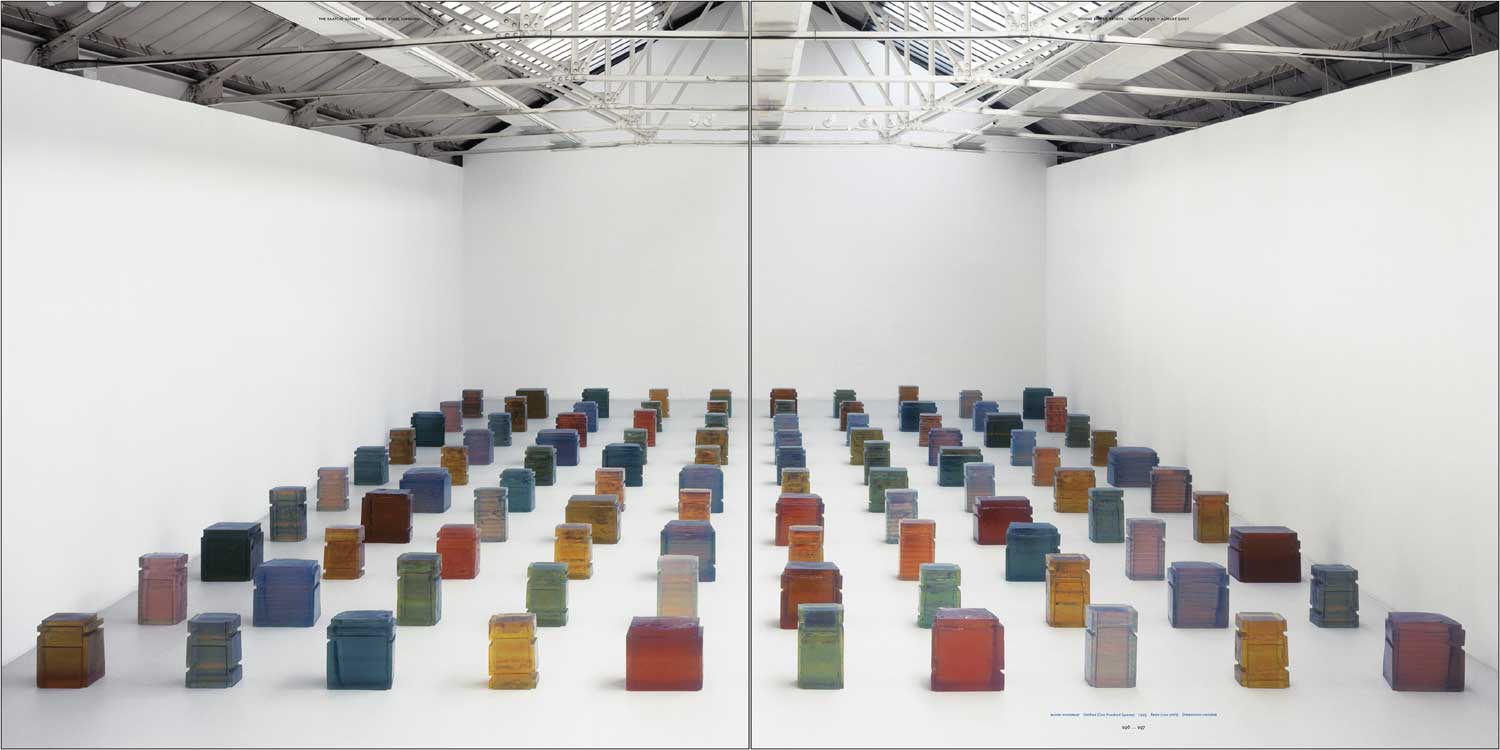
The most notable and obvious dereliction by the Tate has been its failure to pursue the young and unknown artists with whom Saatchi made his most significant mark. For this, Nicholas Serota offered an uneasy reason when chided for buying the Tate’s first painting by Ian Davenport from the eminent Cork Street dealer Waddington, the price said to be £20,000; the Tate could have bought Untitled (Drab) or an equivalent work direct from Davenport at the end of his last year as a student at Goldsmiths, 1990, the price then £1,000, but Serota’s response to my mild rebuke was that the Tate prefers to have its new young artists validated by the trade.(5) The suggestion embodied in this reasoning is that the Tate also fails in its curatorial duty to influence and nurture the promise sometimes discernible in young and unformed artists — but then, as Serota said on another occasion, the Tate cannot risk the purchase of works of art by young artists who do not stay the course; I know to my own cost that promising artists do run out of promise and are then to be found dispensing ripe Camembert in Harrods’ Food Halls or driving trains on the District Line. Saatchi too has encountered this problem.
With none of the constraints that condition buying at the Tate, with license to make mistakes and remedy them, Saatchi became a lurking presence in the market place at a time when a jubilant, buoyant and disarmingly ignorant art market had extended from Cork Street and Bond Street to far-off Portobello Road and its remoter environs, and when journalists by the dozen, equally ignorant, were confidently writing about the wonderful discoveries to be made in art schools from Glasgow to Goldsmiths, Belfast to Brighton. Saatchi walked into these poky little galleries and the even pokier booths in which graduating students exhibited their wares, and sometimes bought the lot. Then their little words stood still. There can be no doubt that he had the instincts of a dealer, the skills too, nurtured by his experience as a collector and the close connections that he had made with such shrewd merchants as Leslie Waddington (by whom his subsequent wife, Kay Hartenstein, had been employed), Anthony d’Offay (who was, in 2007, to negotiate for himself the kind of deal that the state should earlier have offered Saatchi for his first collection) and, above all, Larry Gagosian, with whom, it was rumoured in the mid-1990s, he was close to openly setting up shop.
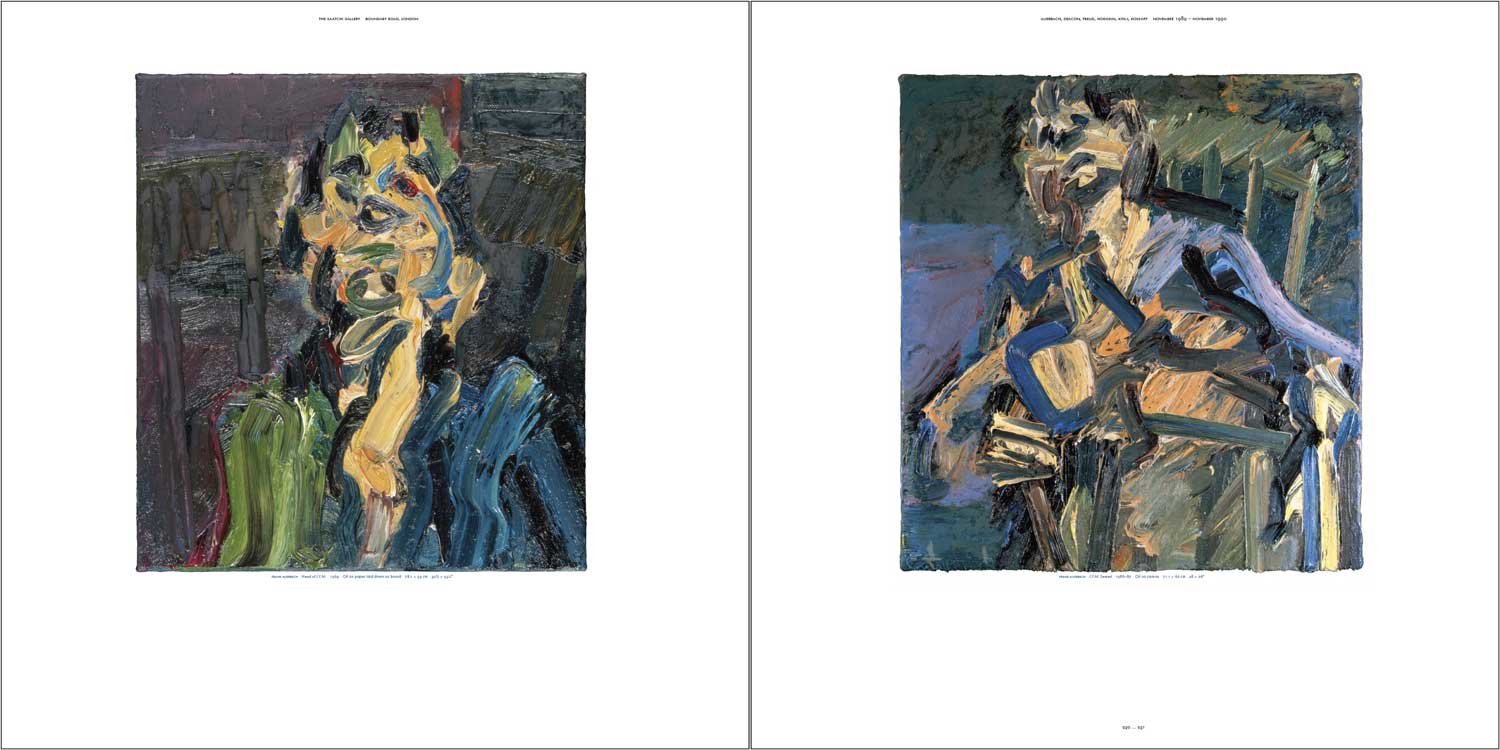
For several years, as the only buyer in this market place, he had cruel leverage over both the artists, unknown or virtually so, and the dealers offering their work — few could resist bulk purchase at half-price, and never mind how delayed the payment might be, for their conviction was that Saatchi’s interest in them was an Open Sesame to fame and fortune. Swiftly, artists concluded that Saatchi’s taste was easily identifiable and that they could and then should conform to it with ‘one-off shockers’, as Chris Ofili put it to the occasional commentator on art matters, Joanna Pitman, ‘something designed to attract his attention’; but if they failed in this intention — not shocking enough, not crudely sexual enough, not puerile enough — they failed utterly, for Saatchi’s tastes were never quite as predictable as they assumed and work blatantly addressed to them would attract no other collector or dealer, for Saatchi-art was either Saatchi’s art or nobody’s. Artists whose work he did buy, promote and support, found themselves in a relationship with a patron of unmatched power in Britain, part a mesmeric Svengali and part a second Kahnweiler, Picasso’s earliest dealer, assiduously adventurist.
Some, least fortunate, found themselves ignored. These, for a bulk-buy pittance, had surrendered all their work only to find that it was never exhibited, never catalogued, never even documented in an inventory, and then, after years in which they found it difficult to establish themselves with other dealers or collectors, they saw it being discarded, either onto the open market or as a gift to the Arts Council or a hospital.
They were, nevertheless, more fortunate than those who had once, publicly, seemed favoured by Saatchi, only then to be discarded, disgraced and humiliated, as was the case with Sandro Chia, Sean Scully and John Greenwood. Chia’s work, in which he had heavily invested, Saatchi returned (in anger after some dispute with the artist, it was believed in 1985) to the dealers from whom he had acquired it, letting the press known that he was ‘purging’ his collection. With this grave insult he did Chia a mortal damage, demand for the painter’s work abruptly declined, his dealers deserted him and the market for his paintings has never recovered. Chia, however, was not ‘made’ by Saatchi, who had simply been just one more collector of work by a well-established painter to whom he owed no particular loyalty — indeed, to the onlooker at the time it had seemed surprising that so earnest rather than adventurous a collector should have bought such exuberantly childish trivia, and thus perfectly proper that, when the scales fell from his eyes, whether or not provoked by some private quarrel, he should purge his collection of such dross. It was the publicity rather than the dispersal that was to be deplored, an early example of Saatchi’s shrewd manipulation of the press and proof that he could break as easily as make an artist.
Having bought eleven major works by Sean Scully in the earlier 1980s, these too were swiftly purged without having been exhibited, but Scully did not, as it were, go quietly, but maintained a propaganda war against Saatchi well into the 1990s, always making the point that the man was not a collector in any true sense, but a dealer primarily interested in profit. An altogether more substantial painter than Chia, Saatchi did him no harm and may have done him some good, for in 1989 he was short-listed for the Turner Prize and in this many onlookers perceived the delivery of a rebuke from the Tate Gallery, the first obvious crack in the Saatchi-Serota front. For his ‘muscular spirituality’ Scully was short-listed again for the Turner Prize in 1993, and is now regarded as one of the grand old men of British painting.
As for John Greenwood — here was a young painter, a student at the Royal College of Art, who might, with some support, put new life into the stale idiom of Surrealism. First at his graduate exhibition, I bought the best of his large fantasies; Saatchi bought the rest and I was then persuaded, partly by an absurd profit but mostly by the argument that Greenwood would benefit more from exposure at the Saatchi Gallery than from having his masterpiece hanging on my stairs, to release it. Greenwood’s work was exhibited in the Gallery in 1992, but he was not offered a monthly stipend, nor steered in any way, and I next saw his Royal College pictures for sale in a back street dealer’s premises off the beaten track.
These three, and other, dispersals led me to conclude that Saatchi’s judgement, the instant decision for which he has so often been praised, is uncertain and that he has to own things, to see them every day, even to live with them, before he can decide whether or not he really wants them. This is a by no means rare condition among amateur collectors, the psyches of whom, driven by cupidity, sexual aggression and anal retention at least as much as aesthetic response (and often distorting it), offer rich material for the enquiring analyst. It was when Saatchi began to sell things of which he had wearied, that I began, cautiously, to respect him as a collector, for this is exactly what collectors must do if their collections are to reflect judgement acquired through experience. Others interpreted his sales as taking a profit, as pursuing his gambles on futures to their logical end.
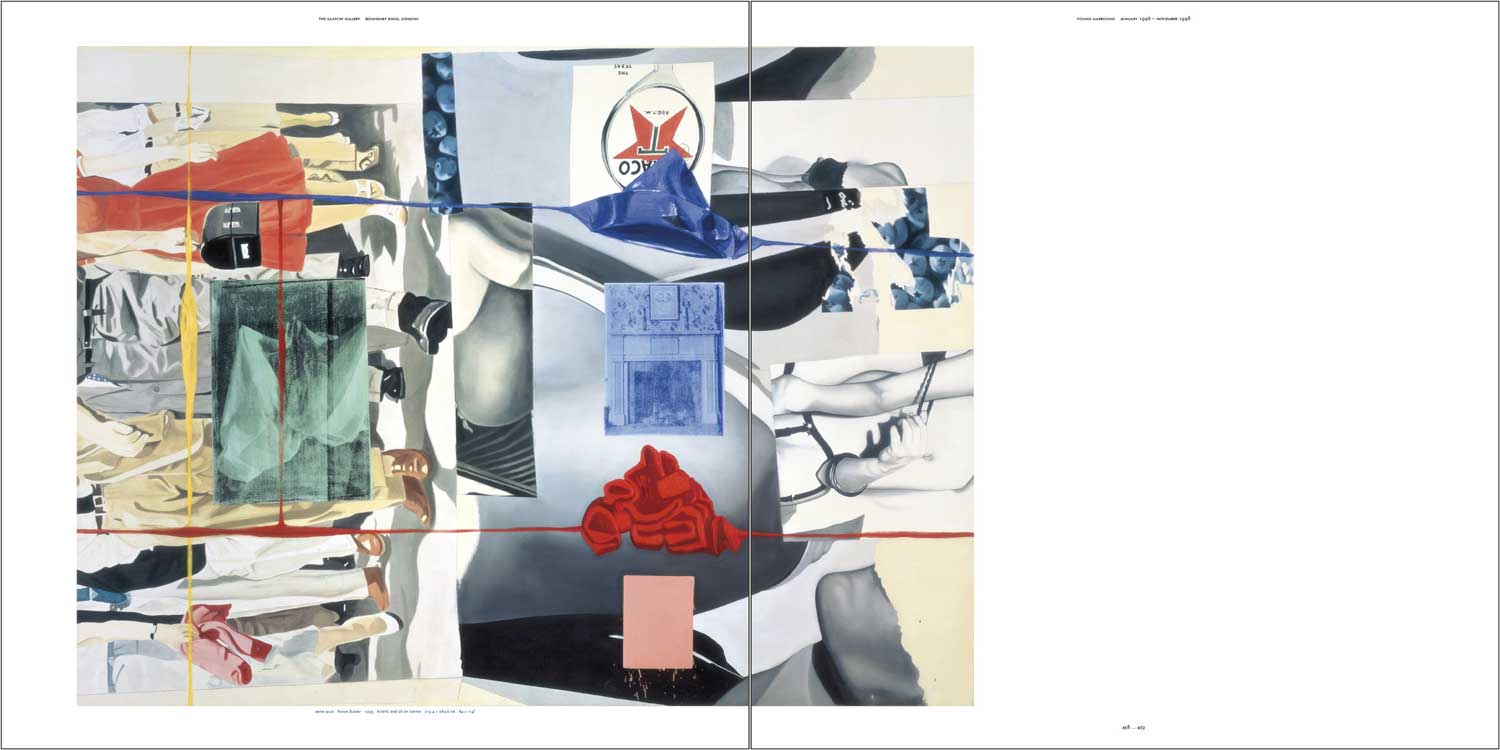
Perhaps both interpretations are in part correct, for the Saatchi who came to prominence as the utterly conventional collector of the 1970s did not suddenly become, a generation on, a showman in much the same sense as those of the early nineteenth century whose entrepreneurial instincts drove them to exhibit any painting rare, strange or notorious enough to merit a tuppenny entrance fee; they overlapped. In recent years he has given the impression of hastily assembling for temporary exhibition groups of paintings that can pass for surveys of immediately contemporary art in Germany, America, China and other parts of the world that offer thoroughly international (and indistinguishable) mimicries of western art — but these have not been the scrupulous investigations of the responsible gallery curator, but happy accidents for the roving predator with too little time to spare. How many of these pictures will he keep? Is there, indeed, still a formal collection or is everything now bought for profitable exploitation and disposal, each successive exhibition funding the next?
If there is a Saatchi art at the end of this century’s first decade, it is less the cutting edge of the Arts Council or the breaking of bounds and leaping of boundaries favoured by the Turner Prize, than a taste for figurative art that is bizarre, grotesque, ghoulish, sexual and calculatedly offensive, much tempered by huge scale, for most of these characteristics are intensely nastier writ small. Saatchi is evidently attracted by unmodulated realism, by the literal representation of the human being or the thing in an improbable material, by the flimsy black plastic waste bin bag cast in bronze and convincingly painted black, the uncomely human figures cast from life by Duane Hanson in fibreglass and resin, and the waxworks — disconcertingly too small or too large — of Ron Mueck, a skilled artisan literally converted into an artist by Saatchi’s promptings and propaganda. His taste for overwhelming scale and shallow assertiveness of imagery must come from his experience in the advertising industry, to the images of which his chosen art is so often close.
He is occasionally attracted by the very absence of merit, by the downright bad, as with Stella Vine, whose crude portrait of Princess Diana, Hi Paul, can you come over …? he bought, with other equally meretricious paintings, from a hapless dealer operating in a disused Hackney garage in 2004. As with so many acquisitions, he courted controversy through a press foolishly willing to be exploited, the mock horror of ignorant journalists worth a fortune in terms of advertising, this a typical example of the promotion of his collection, each addition to which is swiftly and cunningly made notorious. One consequence of the Saatchi ‘treatment’ was Vine being taken seriously by authorities who should have known better: in the summer of 2007, Modern Art Oxford, a public art gallery funded by the Arts Council and the city fathers, gave Vine her first solo exhibition, a ‘major’ retrospective revealing her to be ‘a bold, innovative painter with a fresh approach ..;’ the eximious Professor Germaine Greer, critic and art historian to boot, lent her blessing with an ekphrastic foreword to the catalogue. Yet again, where Saatchi led, critics, curators and academics followed, and Saatchi sold Hi Paul… for £25,000, fifty times what he had paid for it.
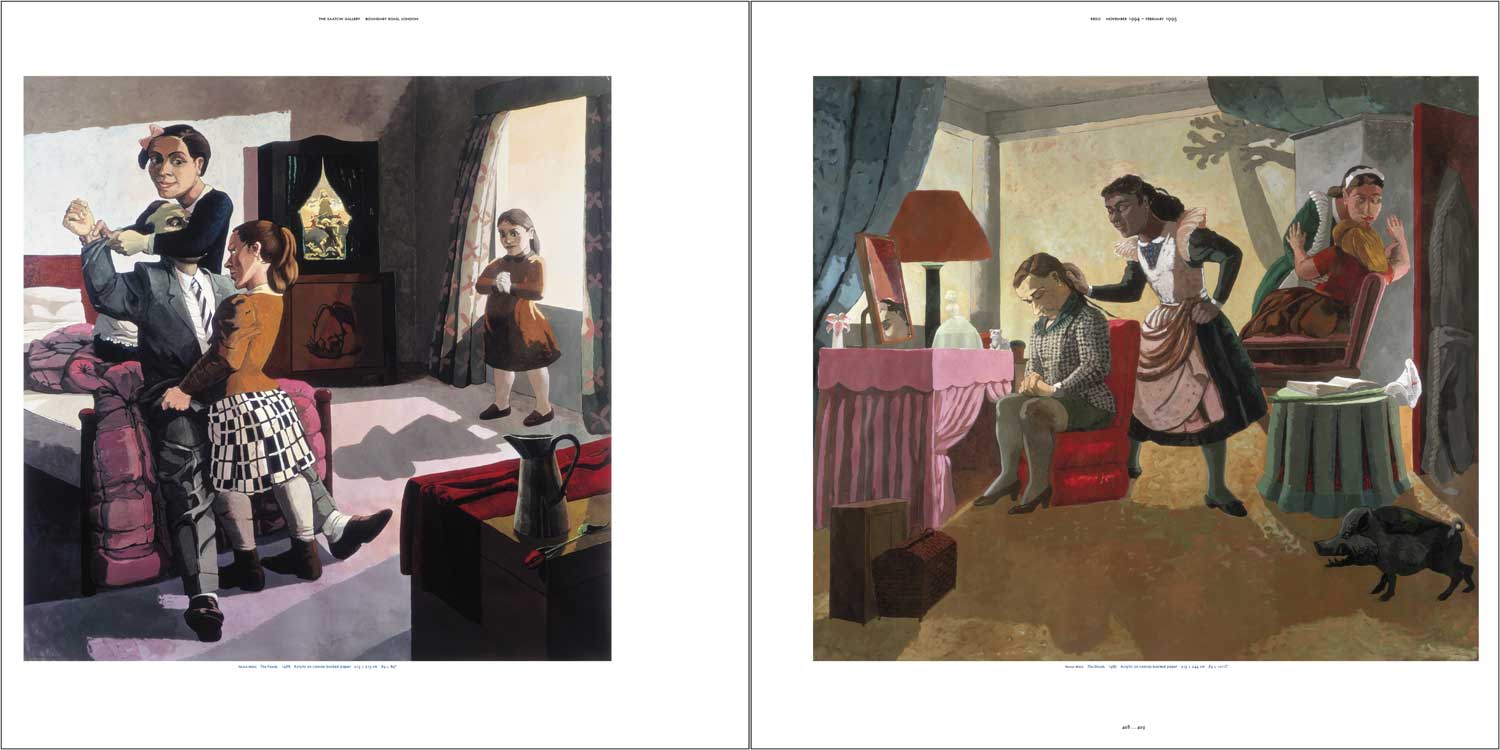
In retrospect, Saatchi now seems with his second collection, the Young British Artsits, to have been remarkably courageous. To have known so little about art and yet to have ventured without hesitation into such shark-infested waters, was an adventure as rash as Colonel Fawcett’s up the Amazon, from the dread piranhas of which he never returned. Saatchi, of course, had a merry group of fawning lackeys to give him confidence, to spout on his behalf the jargon and jabberwocky of the contemporary curator, and the adulation of Sarah Kent, the gushing art critic of Time Out, mistakenly thought to have some appeal to that journal’s youngish audience, must have been a real rock of reassurance on which to build a collection of work by unknown artists — though Matthew Collings, a blokish bottom-feeder in the art world, said of her several Saatchi catalogues, ‘Blimey, they’re boring.’ Fewer than half the artists she recorded in Saatchi’s possession are names to which an informed public can now readily put images, but that is a very comfortable percentage compared with the list of three hundred young British artists published by Art and Design in 1989, a year after Saatchi’s discovery of Damien Hirst at the first and most notorious of the Freeze exhibitons,(6) of whom only sixty or so are, two decades on, still familiar.
With the piecemeal dispersal of this second collection, often for huge profits, Saatchi has been accused of betraying the nation’s heritage, of selling to foreign collectors the great icons of late twentieth-century British art. His accusers forget that he was, in a sense, as much the maker of these icons as the artists, that he enabled works that would almost certainly have remained ideas, even those of dark obsession, to be realised in the flesh — literally so in the case of sharks, sheep and cattle — and that he advanced funds, paid stipends and offered guarantees that allowed artists to fulfil whims without the anxieties of unpaid household bills. The most important of these guarantees was the certainty that Saatchi, as patron, would use his commercial skills to magnify the fame of every artist who responded as willing puppet to his patronage. There can be no doubt that just as Hirst made a shark into a work of art, Saatchi made Hirst into an artist: Serota and the Tate could never have done that.
There are those who see Saatchi as a Medici, a Gonzaga, a Charles I, a Tate, a Leverhulme, a Samuel Courtauld of his day — but he is not of their ilk, for he is as much driven to disperse as to acquire, and the interval between acquisition and dispersal has shortened. He seems, moreover, to have had no wish to enlist any of his collections as a memorial to himself or the artists whom he has sponsored. At the same time, what for years seemed his disproportionate power compared with great state institutions for the visual arts and traditional art dealers (some of them institutions too), has diminished to the point at which his activities as collector, exhibitor and seemingly inexorable force in the market place no longer matter.
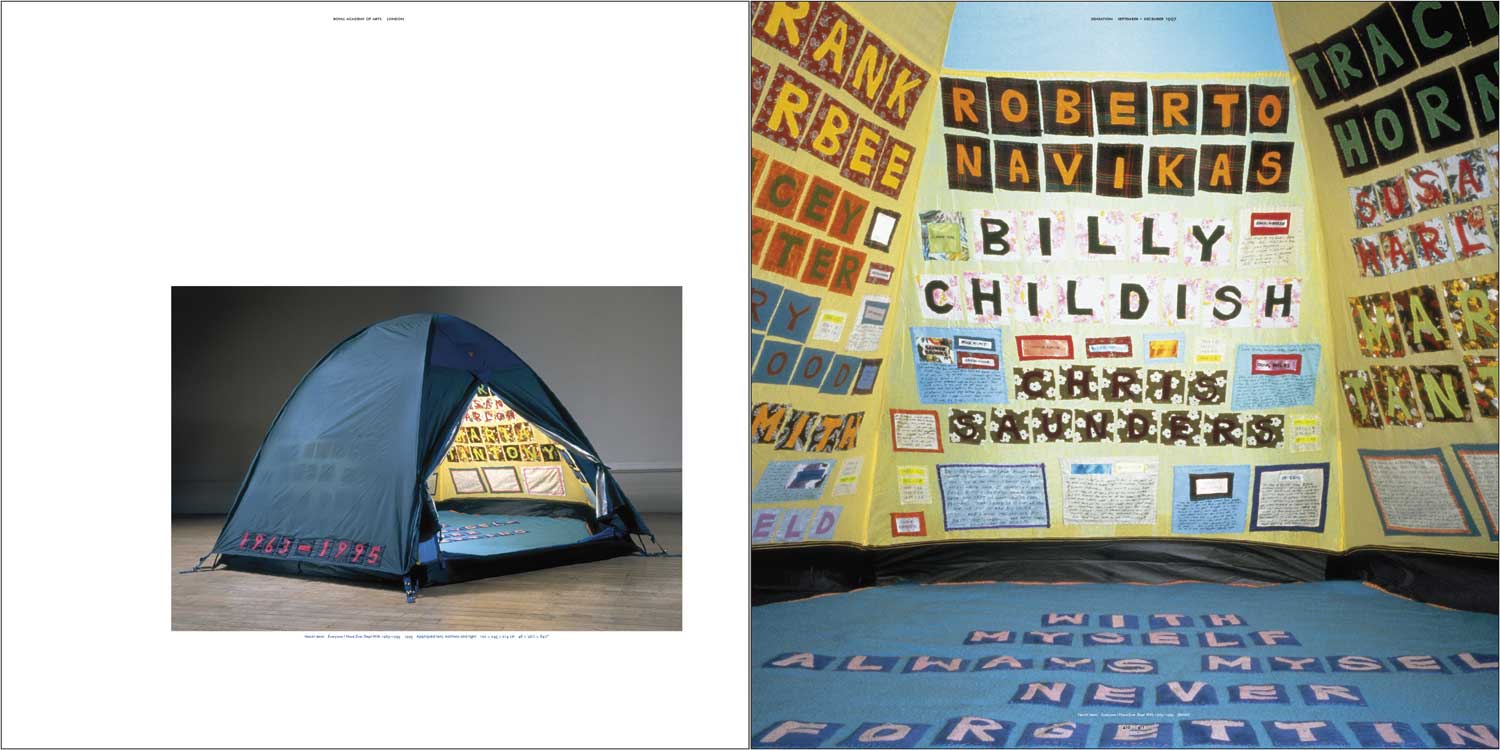
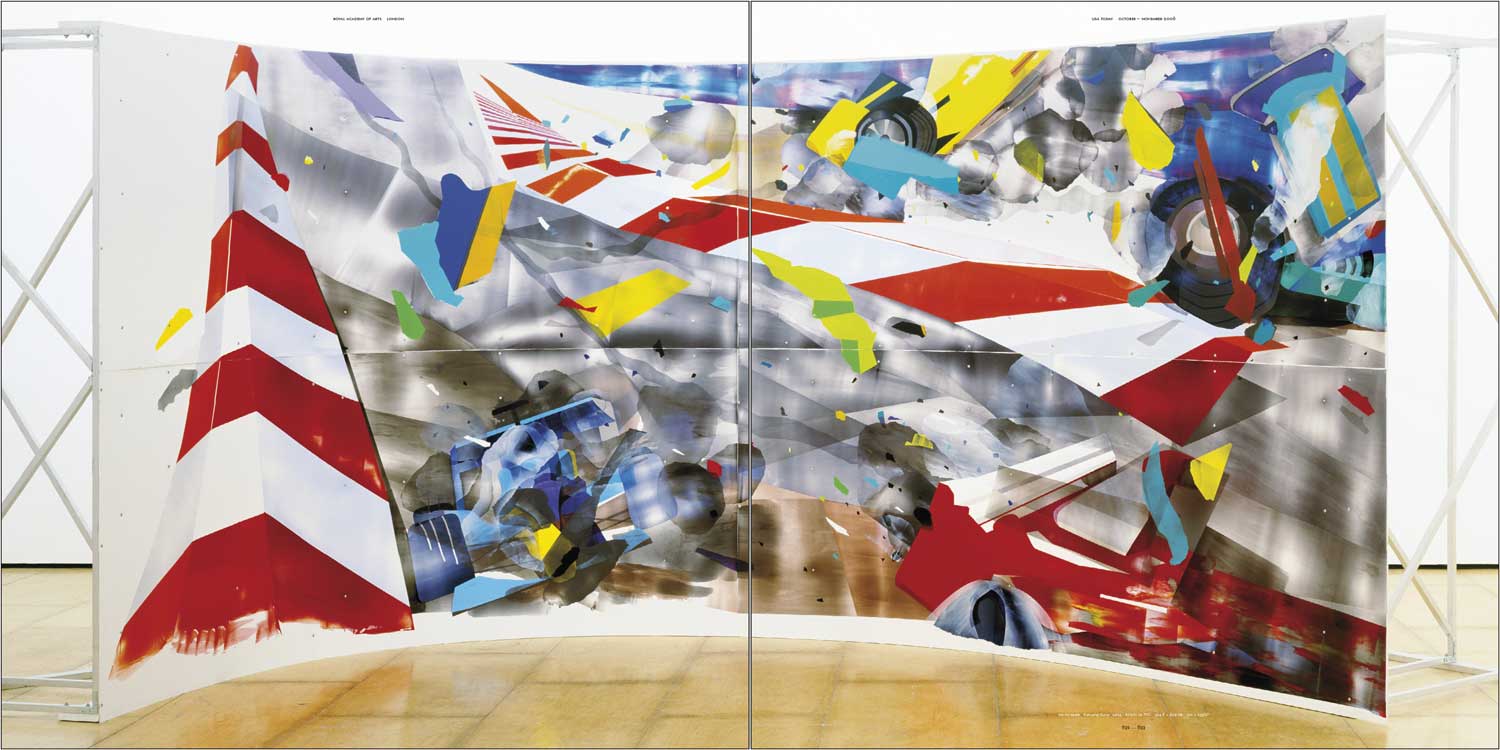
Gone are the days when Saatchi and Serota seemed equal powers in the land — Serota who once, at Whitechapel, seemed so inspired and inspiring, now, at Tate Modern, reduced to the role of desiccated administrator and unloved headmaster; Saatchi, always the lively one, ingenious and provocative, now the ringmaster of a circus that has sold its clowns and acrobats.
For Saatchi it had begun to seem a running into sand, a wretched end, but suddenly, in October 2008, yet another Saatchi was revealed, sober, sane and reasonable, performing the useful service of exposing the bathetic dreadfulness of Art Now from wherever in the world he chooses. In his latest gallery, light, proportional and functional within the handsome classical skin of an early nineteenth-century army barracks in the heart of Chelsea, he has created a friendly tool with which to perform such curatorial exposures, its giant portico a thousand times more welcoming than the doom-laden entrance to Tate Modern. He has taken a quarter of a century to reach this third incarnation of his gallery and, at last, it has an air of permanence. That air raises a very serious question: with Saatchi’s death, what then? He has against a great deal of scornful opposition (including my own), performed a great good, ironically even in his Sensation exhibition. We may have cared for very little of the work he has shown us over the years, but he enabled us to see it as it happened and, looking back, my impression is that he made no particular claim for any of it, that as a curator he was dispassionate, unlike those who work for state-owned galleries and the Arts Council and invariably claim that their chosen contemporary artists have merit enough to become the Old Masters of the next generation. Saatchi, more than any man, has been, and still is, responsible for letting us see immediately Art Now in its infancy. We should honour him for it by ensuring that his latest gallery becomes a lasting relic of all that he has done for art in Britain.
- Douglas Cooper, reviewing the Tate’s Biennial Report of 1972–74, Books and Bookmen, January 1976.
- Alistair Hicks: New Art in the Saatchi Collection, Thames and Hudson, 1989.
- Catalogue of Sculpture in the Open Air, Battersea Park, 1966.
- Sir Brian McMaster: Supporting Excellence in the Arts, DCMS, 2008.
- In conversation with the author,in front of the painting when first displayed in 1991.
- Anon: ‘40 Under 40, the New Generation in Britain’, Art and Design, Vol 5¾, 1989.

